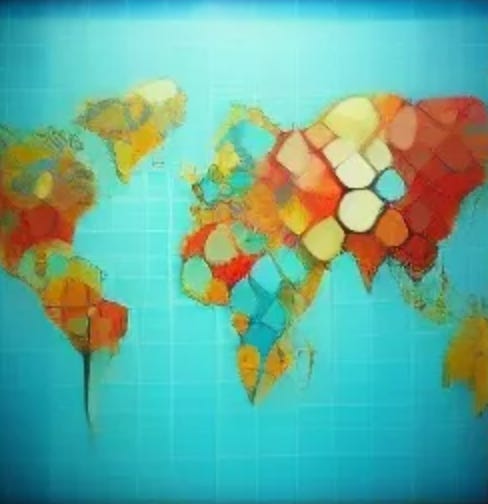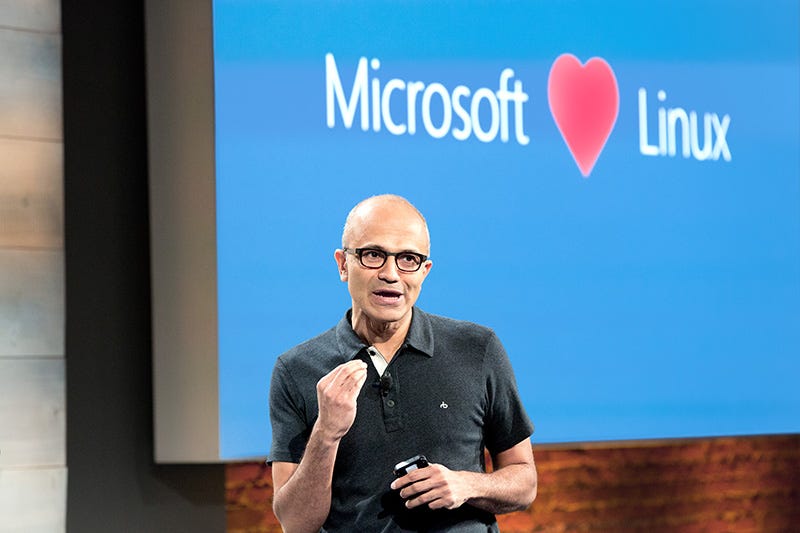A Diasporic Dream of Network Unions
An exploration into major diasporas and their opportunities for further network unions and more.
Bird's Eye View
This is essay 3 of 4 essays for 1729 Writers Cohort #2. 1729 Writers is a group that writes to build on ideas related to Balaji Srinivasan’s new book The Network State, which can be ordered here. This post is purely academic in nature, and it does not constitute any formal political, scientific, legal, financial, social, religious, or ethical advocacy. For earlier posts and musings, please visit whatifwhatif.substack.com.
Inspired by a series of discussions among members within the 1729 community, this essay will explore the history, evolution, and pain-points of various major diasporas around the world as well as their potential for further network unions and more.
Digital Painting of Diasporic People (Source: Midjourney)
Introduction
Through a series of no-punches-withheld discussions, Balaji Srinivasan's The Network State explores how we have arrived at the world of 2022, where we may be headed next, and what we can do to create new futures characterized by the concepts of network unions, network archipelagos, and network states (these concepts are also explained more here). Through what Balaji calls “cloud first, land last," the road from startup societies to network states hopes to give many an alternative paradigm out of seemingly domestic or international impasse and zero-sum competitions.
A diaspora, loosely defined as the spread of a nation or people from an original homeland to many new locales, may be well positioned during the digital age to build on the above-mentioned concepts and fortify network unions with strong identity, focus, purpose, and membership. In a sense, some diasporas are already similar to network unions — there is often enough mutual identity or common origin for purpose, trust, culture, ideology, and narrative to be created, expanded upon, and sustained. To some extent, many diasporas have already “crowdfunded” physical nodes that allow them the potential to evolve into network archipelagos. And some diasporas even number in the millions — greater in numbers than ninety percent of countries that are represented in the United Nations.
Thus, a diaspora is already in some ways a “network nation": A large body of people united by common descent, history, culture, language, or proposition that are spread in a network or via multiple networks around the globe. A diaspora exists and operates within multiple host nation states, similar to how a multi-national company (or in Balaji's words, multi-state company) would have existence and operations within multiple states or countries. A diaspora often faces challenges different from those in the ancestral homeland and also often find differences with those in the host countries. Yet, comparatively (to nation states and to multi-national/multi-state companies), without formal organization and recognition, a diaspora often has fewer recourses for collective action, nor does it have proportional representation in front of its ancestral country, within its host countries, or on the global stage in a fashion that would be consummate with its size. Liechtenstein, with a population of less than 40,000, has an Olympic delegation, while the Indian diaspora, the world's largest with a population of around 18 million (of first generation migrants), has none. That seems insane!
Perhaps, things may change in the digital and Web 3 era, and we may see more tech-enabled organization, representation, action, and recognization by various diasporas. A recent thread in the 1729 community group had raised thoughts on various diasporas’ pain-points. This essay will attempt to examine several of the largest diasporas, their history and evolution, as well as their opportunities to address pain-points. For anyone curious, click here for a fairly comprehensive list of diasporas around the globe.
Digital Painting of Diaspora on the Global Cloud (Source: Midjourney)
Jewish Diaspora
The Jewish diaspora is a classical example of a diasporic movement that had experienced multiple existential trials and tribulations as well as modern success in forming an actual startup state (Balaji had also referenced Israel as a startup-state in several of his talks). This diaspora is as old as the Old Testament and has found itself disseminating through centuries across Euroasia, from Spain to India and China, and through the Atlantic to the New World in much of both North American and South America.
For millennia, as a nation and people numbering in the millions but without a formal state, the Jewish and their diaspora communities — which often found their way to becoming key elements in banking and trade — became common scapegoats when times were bad. Without formal recognition and effective means of representation, the Jewish suffered through the Inquisition, various pogroms, numerous bouts of persecutions by host nations, and in the 20th century, the very unfortunate Holocaust.
What emerged through centuries of marginalization and near-existential pogroms was Zionism and a negation of the diaspora, which contended that the Jewish diaspora either would fall to persecution or assimilation by host countries unless it found a true motherland in the Holy Land. Zionism had a zeal and purpose that fueled generations of Jewish around the world into collective action. The result was Israel, which arguably was a startup state.
The topics of the modern Israeli state and modern Zionism often invite vigorous debate — partly due to relations with another nation without state — but that is out of scope of this essay. The illustration of the Jewish diaspora is a case of a diasporic people resilient through centuries of persecutions and eventually through collective call to action founding a new startup state. Religion, in the form of Judaism, has served as an essential glue that held the diaspora together century after century, surviving the rise and fall of other empires, monarchies, and nation states.
Indian Diaspora
According to a strict United Nations definition, the Indian diaspora stands at around 18 million and is currently the largest in the world. This number, based on the United Nations International Migration 2020 report, does not even account for second generations and descendants of current first generation Indian migrants, nor does it quantify the millions more in recent history. According to the Indian Ministry of External Affairs, the total number of Non-resident Indians and Overseas Citizens of India (which include people of Indian descent) actually amounts to around 32 million. That's a size bigger than 81% of existing countries in the world.
The Indian diaspora traces its history back to the days of Hindu kingdoms and sultanates, through the labor migrations during British colonial era, and to the modern day brain drain from IITs. The overseas ethnic Indian population amounts to over one million in areas such as the United States (~4.5 million), United Arab Emirates (~3.4 million), Malaysia (~3 million), Saudi Arabia (~2.6 million), Myanmar (~2 million), United Kingdom (~1 million), Canada (~1.7 million), Sir Lanka (~1.5 million), South Africa (~1.5 million), and Kuwait (~1 million). As one of the most successful diasporas, the Indian diaspora (including those of Indian descent) has been ascendant in law, medicine, science, and especially tech — with top executives at Google (Alphabet), Microsoft, Twitter, IBM and a host of other Fortune 500 global tech companies.
Microsoft CEO Satya Nadella (Source: By Richard Morgenstein. Under Creative Commons Attribution ShareAlike License)
Balaji has often commented on the potential of the Indian people (as a bigger concept than merely the Indian state), including the Indian diaspora and those of Indian descent, to be a driver of growth, innovation, and balance well into the 21st Century. The strong presence of the Indian diaspora in the global tech space and in the Web 3 movement could offer it a potential for experimenting with network unions that use blockchain technology and spur further digital innovation in social organization.
Given its presence as a sub-continent and macro civilization with numerous sub-cultures, religions, languages, and ethnicities (with over two thousand ethnic groups!), there would also be potential for various components within the global Indian diaspora — for example, the Bengalis, the Tamils, the Gujarati, etc — to form network unions with call-to-actions supporting their distinct cultures, dietary needs, religious beliefs, and communication norms. Overall, network unions may offer a fascinating combination of global connectivity, growth potential, and subcultural connections for diasporic members of the subcontinent.
Chinese Diaspora
Like India, China is also at the highest level a sub-continent and macro civilization, and the Chinese diaspora is one of the largest in the world. According to a strict United Nations definition, the Chinese diaspora in terms of current first generation migrants stands at about 10 million (see United Nations International Migration 2020 report). According to UNESCO, however, the total number of overseas ethnic Chinese, including further descendants of first generations, may amount to around 60 million. That's a size bigger than 90% of the countries currently in the world.
The Chinese diaspora traces its history back to the days of the Ancient Silk Road and Zheng He's expeditions to the Indian Ocean, through trader and worker migrations during the 16th to 19th centuries, and to the modern day immigrations around the globe. The overseas ethnic Chinese population stands above one million in places such as Thailand (~9 million), Indonesia (~8 million), Malaysia (~6.7 million), the United States (~5 million), Singapore (~2.6 million), Canada (~1.7 million), Australia (~1.4 million), the Philippines (~1.2 million), South Korea (~1 million), and Myanmar (~1 million). Over the past centuries and decades, the Chinese diaspora has in a sense “crowdfunded” land archipelagos in the form of Chinatowns, which host significant parts of the diaspora population along with shops, restaurants, tourist spots, communities, real estate developments. For those interested in exploring, this site gives overviews of 35 major Chinatowns around the globe.
Melbourne Chinatown (Source: Public Domain)
Like the Jewish diaspora, the Chinese diaspora, which also often found its way in key commercial sectors in some host countries, has also been the target of much discrimination and scapegoating, as early as the Spanish massacre of Chinese community in 1603 Manila and as recent as the Suharto reign and 1998 riots in Indonesia. In recent times, many in the Chinese diaspora have arguably been affected by anti-Asian hate arising from Covid-related backlash, as well as by geopolitical tensions arising from conflicts between People's Republic of China, its surrounding countries, and the West. Some of the states whose territories hold the largest Chinese diaspora populations, such as the United States and Australia, have also recently seen upticks in anti-Asian violence or tension. Given the possibility of escalating geopolitical tensions and turbulent China-West relations ahead, some growing up in the Chinese diaspora and trying to find their place in the world may find a hard time adjusting and making sense of everything — between an ancestral land seemingly far away that is often shown in a negative light on the media and a host land where swathes of residents see them with unease or suspicion (even if that suspicion may not be outwardly displayed).
Perhaps network unions could be in a way for members of this large diaspora to find support for one other — economically, socially, and culturally — amid rising geopolitical and racial tensions that are largely out of their control. This could manifest itself, for example, in the form of globally connected calls-to-action supporting those facing repeated rejections or discrimination by prospective employers suspicious of WeChat users (this point was inspired by a post by a 1729 community member), or along other forms, such as a union of Chinatown communities to resist anti-Asian racism and violence. With that said, due to the sensitive nature of current political environments, the divisive nature of certain ideas, and the possible existential nature should certain words be misinterpreted by certain readers, this essay will try to refrain from other more sensitive topics related to this group.
American Diaspora
The words "American" and "diaspora” at first glance would not seem to fit in the same sentence, and yet, the American diaspora is also one of the largest in the world. According to statistics published by the United States Government Accountability Office, excluding active service members, there are around 8.7 million Americans who live abroad, with the highest numbers in Mexico, Canada, India, Germany, the Philippines, and Israel. The America diaspora is also one of the most diverse. Due to the United States being a mostly immigration country as opposed to being an emigration country, members of the American diaspora may also claim membership in one or more other diasporas.
Americans abroad are an oftentimes underrepresented group: many face distinct issues in terms of healthcare or employment, and yet there are not enough critical mass or votes for the congressional representatives in home states to really care — other than perhaps a few token words or prayers. Due to the uneven reputation of the United States around the globe, as well as the myth of the “gringo” as an equivalence of wealth, Americans in some regions of the world may also face increased risks of being targeted while having relatively little recourse for protection. Arguably, all the taxes paid by American expats don't really translate into many tangible benefits and coverage while abroad.
The network union concepts mentioned could also help with the American diaspora, in terms of forming more organized critical mass, more mission-critical voice, and more call for action. One could imagine some kind of network through which American diaspora members would find greater support, protection, insurance, and representation while preserving a high level of censorship resistant pseudonymity and personal autonomy around the world.
African Diaspora
The African diaspora arguably started with the first homo-sapiens migrating out of the continent hundreds of thousands of years ago, so in a sense, we are all descendants of this diaspora. The more modern African diaspora, in a macro case, consists of tens of millions of descendants of peoples who were forcibly displaced by the unfortunate slave trade, as well as first generation migrants to places such as Europe. The modern African diaspora (including multi-generational descendants of peoples who arrived from from Africa during the colonial era) has millions in numbers in the United States, Brazil, Haiti, France, Yemen, Saudi Arabia, United Kingdom, Mexico, and Canada.
The concepts of global network unions may inspire many of African origin or who identify as being a part of the African diaspora to collective action. Many African nation states arose in the aftermath of colonialism and became a hodgepodge of tribes demarcated by artificial straight lines, and hence there are oftentimes more efforts to inspire collective global African consciousness as opposed to focusing on those from any one African state. One of the most salient projects associated with Balaji's network union ideas is Afropolitan, which aims to create community-led and community-as-a-service opportunities for Africans or those of African origin in the global diaspora. Having raised millions in funding from Balaji Srinivasan and other key investors, Afropolitan has a critical mission to create what it terms as a Digital Nation consisting of those in the diaspora, through a four step process: network building, value-added services, minimum viable state, and crowdfunding land through negotiations with partner governments.


Afropolitan Manifesto (Source: Twitter)
Conclusion
In conclusion, one could argue that diasporas, which are already united by common descent, history, culture, language, or proposition, as well as spread around the globe, may be able well positioned to advance strong network unions and startup communities. Such efforts may help achieve a combination of the following:
Protection from discrimination, targeting, racism, and violence.
Provision of economic opportunities and support.
Provision of critical community services.
Strengthening of identity and culture.
Consolidation of representation and voice.
This concludes our discussion, thank you for reading!
Disclaimer: This post is purely academic in nature, and it does not constitute any formal political, scientific, legal, financial, social, religious, or ethical advocacy. For earlier posts and musings, please visit whatifwhatif.substack.com.






